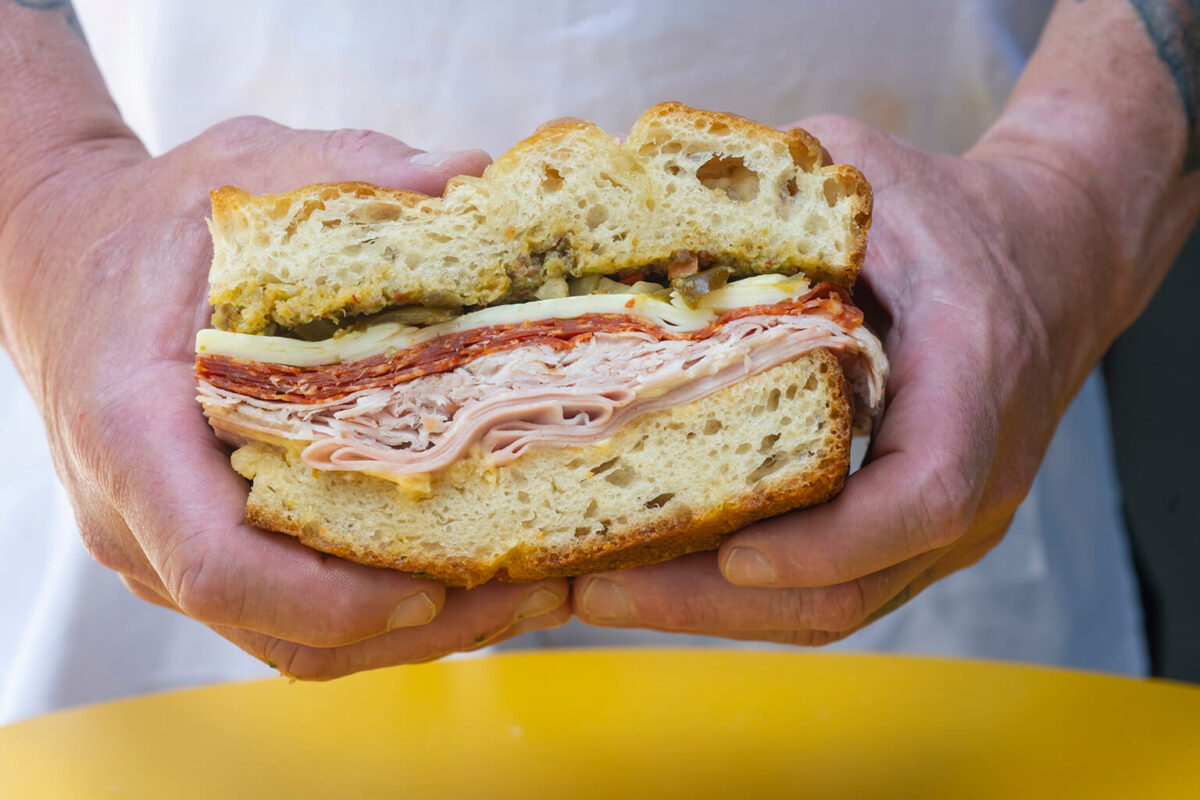Words by Johanna Harlow
Che Fico Mercato defies all your grocery store expectations as soon as you step through the entrance. At this newly-opened Italian market in Menlo Park, a gleaming chandelier with blown glass fruit dazzles in the doorway, while a Pompeii-style mosaic spreads across the floor, its tiny tiles depicting seasonal ingredients from pigs to pomegranates. Italian goods line shelves painted in a cheery tomato red, and are accompanied by a deli with killer sandwiches, a fridge full of domestic and imported cheeses, a top-tier wine aisle and a butcher counter offering quality cuts. Outside, a line of people have surrendered to the siren song of the gelato window. There’s another reason this market is one-of-a-kind: It’s an offshoot of a thriving Italian restaurant.
Why might Che Fico, a brand known for its upscale Italian dining, expand into the cutthroat grocery business? For a start, the owners have already established trust with Californian farmers and ranchers, developing a reputation as devotees of fresh, local ingredients. “Those relationships have been built over years of running the restaurants,” explains David Nayfeld, Che Fico’s chef and one of its co-owners. “We work with so many farms here—whether it’s getting basil from Lou Vue Farm, whether it’s Kashiwase stone fruit or Star Route lettuce.” He leans his arm on a crate of blushing peaches. “You’ve never seen summer produce like some of the stuff that Full Belly Farm produces. Whether it’s melons, peppers, squash, tomatoes, eggplant.”
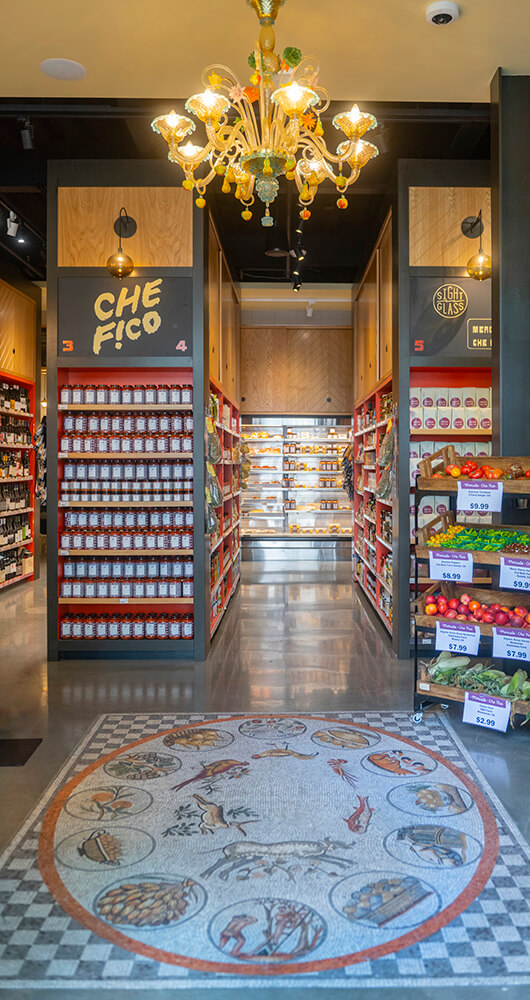
That relational bent extends to the Mercato’s customers. “We’re trying to harken back to an older and a different time of shopping where you would have a relationship with your butcher. You would have a relationship with the person who makes the sandwich. They know you,” he says.
David can walk from Che Fico Parco Menlo (the restaurant’s new Menlo Park location) to the market in less than a minute. The sister kitchens are used in tandem. “We’re making our gelato base here at the market—and that will be the gelato base that we use at the restaurant,” David notes. Same goes for the focaccia. “The one that we serve at the restaurant is the same one we serve here at the counter.”
You can also stock up on handmade pasta and in-house sauces. Restaurant-grade Bolognese and spicy vodka sauces are ready to be ladled generously onto the curly fusilli or ruffle-edged radiatore. “The brand of Che Fico is about slow food,” David explains. “It’s about making things from start to finish.”
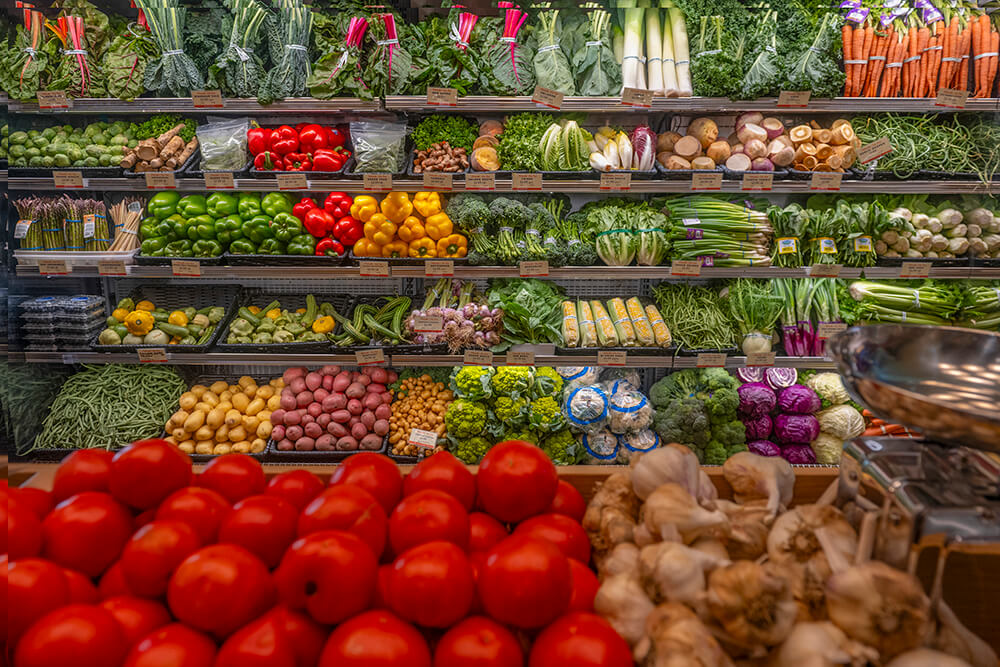
You can see David’s hustle reflected in his description of his parents, hardworking refugees who fled Belarus for the Bay Area before he was born. His mom cleaned houses to pay for chiropractic school, David says. “And my dad literally did everything under the sun when he got to the United States—whether it was welding, fixing phone booths, being a bus driver,” until he could build his own business selling medical equipment. David got his first job at age 13. “Ironically, I started in a market, stacking produce in Alameda,” he reveals.
As his culinary career took off, David spent four years as the senior sous chef at New York City’s Eleven Madison Park, playing a pivotal role in the team that elevated the restaurant from one Michelin star to three. After that, he spent a year working under renowned chefs at top restaurants across Europe.
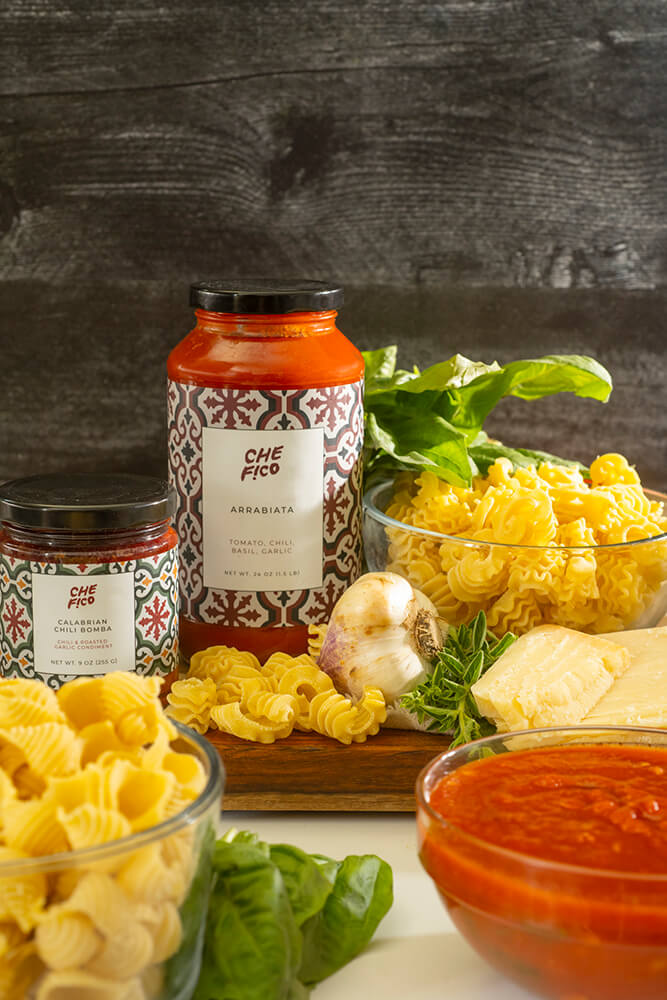
Then David joined forces with Matt Brewer (formerly of Hogsalt Hospitality) to create Che Fico’s parent company, Back Home Hospitality. That was nearly a decade ago. “We’re pretty much married,” David laughs. “We don’t agree on everything, but you’re not meant to agree on everything. That’s why you have a partner.” To this he adds, “We both have very different strengths and weaknesses, but we have very similar morals and values.” One deep-seated belief? “In America, everything is about finding the fastest, quickest way to scale—and we did it to food,” David muses. But in the quest to make things uniform, “we’re stripping away the romance and stripping away the idiosyncrasies.” David wants to see nutritious, local food and quality ingredients given their proper due. Behind him, lending credence to his words, is a picture-perfect produce aisle, with precisely stacked broccoli and artichokes, neat rows of rainbow chard and dinosaur kale, and tidy bundles of lemongrass.
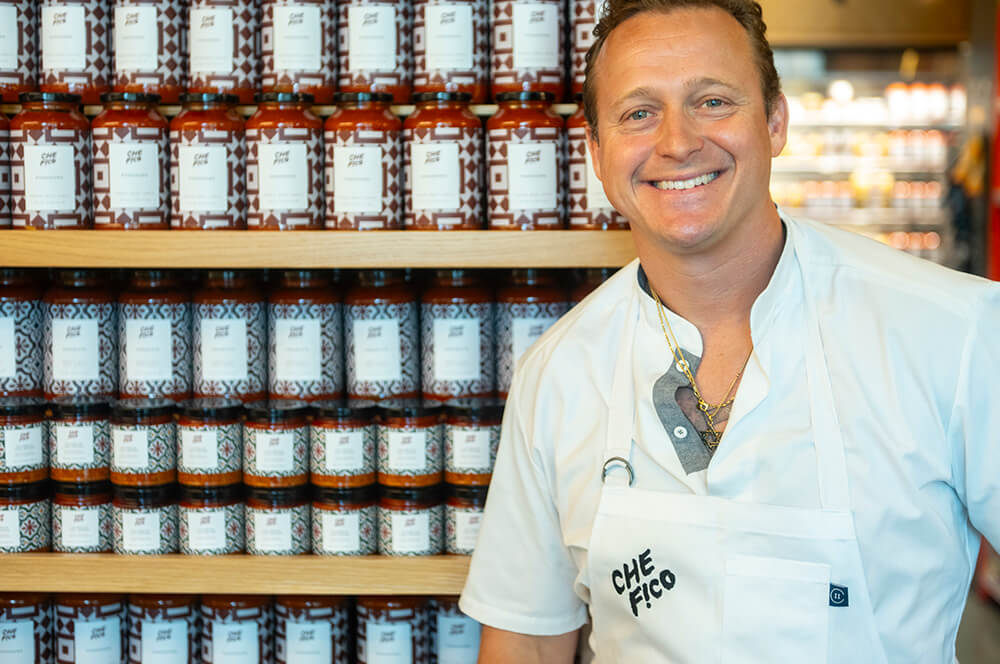
In this everyday space, there is beauty. But rather than wax poetic about the market’s deli, David lets the enormous Lamortazza sandwich speak for itself. As our interview nears its end, he produces a marvel of mortadella, mozzarella, demi-sec tomatoes, fresh basil leaves and pesto loaded between generous hunks of focaccia. Watching me puzzle over how best to bite into this beast, cocking my head from side to side, he offers some sage advice: “Don’t be afraid of it!” Attack the sandwich. Got it. Setting table manners aside, I take big bites, ignoring my messy pesto fingers. “I love food that isn’t gimmicky,” David says with a satisfied nod. “I like food that’s meant to satisfy your soul.” Served on a nice plate at an upscale restaurant or wrapped in deli paper and passed over the counter—both meals can be magical.


